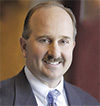“Social media” used to mean talking with your neighbors about something you saw in the paper or on the local evening news. Or what about “chats?” They take place all the time over coffee at the parts counter, across fences, at Sunday dinners or around town; these are in the truest sense of the word, “conversations.”
If someone asks if you’ve done any “posts” today, they probably didn’t mean whether you fixed all the “posts” the heifers knocked down last night. A story from “Tik Tok” isn’t referring to the sound you hear when its quiet in the milking parlor. And if you’re “sharing,” it’s probably not about giving your neighbor extra tomatoes from your garden. You get the picture.
Today, chats, conversations, posts and sharing are the lingo and currency of social media, with most of it a new twist on the traditional schoolhouse meaning. As to whether we are any smarter from the deluge of information from the conversation … well, that’s a topic for another day. But one thing is for sure, there are many points of view being expressed, some based in fact but many in fiction and hyperbole. It’s the Wild West out there.
Take the topic of electrification versus the end of the internal combustion engine (ICE). It plays out like traders barking orders on the New York Stock Exchange floor: Buy! Sell! On one hand, no one can deny the role of ICE and fossil fuels in building and, today, underpinning the entire modern global economy – not to mention getting better all the time with increased efficiency and near-zero emissions.
On the other side, electrical vehicle advocates (often environmental groups and lithium investors) aggressively call for full- scale selling and a move away from fossil fuels to electrification. The end of ICE can’t come soon enough! One-sided, imbalanced social posts and conversation threads pile on the virtues of all-electric, just as online bloggers use images of black smoke from a 30-year-old diesel truck to make their case calling for the elimination of ICE by some date in the future.
It’s a heated debate, where everyone should have eyes wide open and be interested in the full set of facts. According to U.S. EPA, in 2017 transportation is now the largest single source category of greenhouse gas (GHG) emissions in the U.S. at about 29%, displacing electricity generation from power plants, now at 27.5%. The agriculture sector accounts for 9%, from livestock emissions, agricultural soils and rice production; offset by 11.1% for land areas absorbing CO2 from the atmosphere. So agriculture is both a source of GHG (problem) and a means to reduce them (solution) – a key point often overlooked.
In the case of electrification advocates, it’s the nagging questions about rare metal supply, geopolitics and availability, recycling of used batteries, and especially the electricity fuel source that go by the wayside. They matter, because the source of the power matters – renewable electrons, fossil or nuclear? According to the Energy Information Administration, in 2018, about 4,171 billion kilowatt hours (kWh) (or 4.17 trillion kWh) of electricity were generated at utility-scale electricity generation facilities in the U.S. About 64% of this electricity generation was from fossil fuels (coal, natural gas, petroleum and other gases). About 19% was from nuclear energy, and about 17% was from renewable energy sources (solar, hydro and wind).
When it comes to “clean” electricity, location also matters. Vermont, Idaho, Washington and Oregon get over 75% of their electricity from hydropower. Texas, Iowa, California and Oklahoma lead in generating electricity from wind. Electrons produced in those states are zero-emission electrons. But for states where conventional fossil fuels create the electricity, a full-scale shift toward electric vehicles or equipment would be simply exchanging tailpipe emissions (that are mostly near zero) for smokestack emissions (that may be less aggressively reduced).
The electrification conversation itself is a whipsaw of several themes: hardware reality (range limitations, charging infrastructure), customer needs (uncertain, limited or non-existent), political motivations (abundant and growing) and pure economics today (harsh and barely justifiable). While automakers are deep into electric vehicle technology commitments, tractor and equipment manufacturers are more on the periphery, but in their own way bringing innovation that achieves much of the same result: less energy consumed, greater efficiency and using low-carbon renewable fuels.
They are already incorporating aspects of electrification that is already providing value to farm equipment users today. Using an electric motor instead of belts driven off the engine saves diesel fuel by minimizing traditional PTO load and idle-up practices, instead allowing an engine to run at RPM optimized for efficiency to drive a generator or hydraulic pump. Some planting implements incorporate electric motors directly to deliver precision nutrient injections, for example.
But electrifying entire tractors or harvesters is a much bigger question. Along with major questions of when or if battery prices and performance would be competitive with today’s diesel and gasoline engines (which also continue to get more efficient), there is the customer demand part of it. If I build it, will they come? Not to mention the very viable option for farmers of shifting from diesel fuel to more renewable biodiesel fuels that are themselves low carbon.
Right now, transportation and its number one spot in GHG emissions is a major U.S. focal policy point, where discussions about electrical vehicle charging infrastructure and vehicle incentives dominate. Ultimately, greater electrification of our tractors, cars and trucks will be driven by market needs (what the customer wants and is willing to pay for) and what society demands.
Until then, manufacturers continue to improve the diesel (and other ICEs) engine efficiency and performance while still meeting near-zero emissions requirements. We should place a high value on consistent and continued progress to reduce energy consumption, use more renewables, lower emissions and improve efficiency; however that happens, that’s a win-win for everyone no matter what “side” you’re on. And there should be a high value on meaningful dialogue and respectful online conversations with fact-based representations of current generations of technology. The challenges of climate change are big ones that will require many different solutions, and with agriculture being identified as both cause and effect, it’s complicated.
The social chatter surrounding electrification and the end of the internal combustion engine churns out more fodder than a harvester blowing out heavy chaff in a field of high dry corn. Until the dust settles, we’ll need to protect our eyes, sometimes hold our breath, and see which way the wind is blowing, but above all else, we need to make sure to separate the ears from the stalk and get the crops in before it rains. ![]()

-
Allen Schaeffer
- Executive Director
- Diesel Technology Forum
- Email Allen Schaeffer





